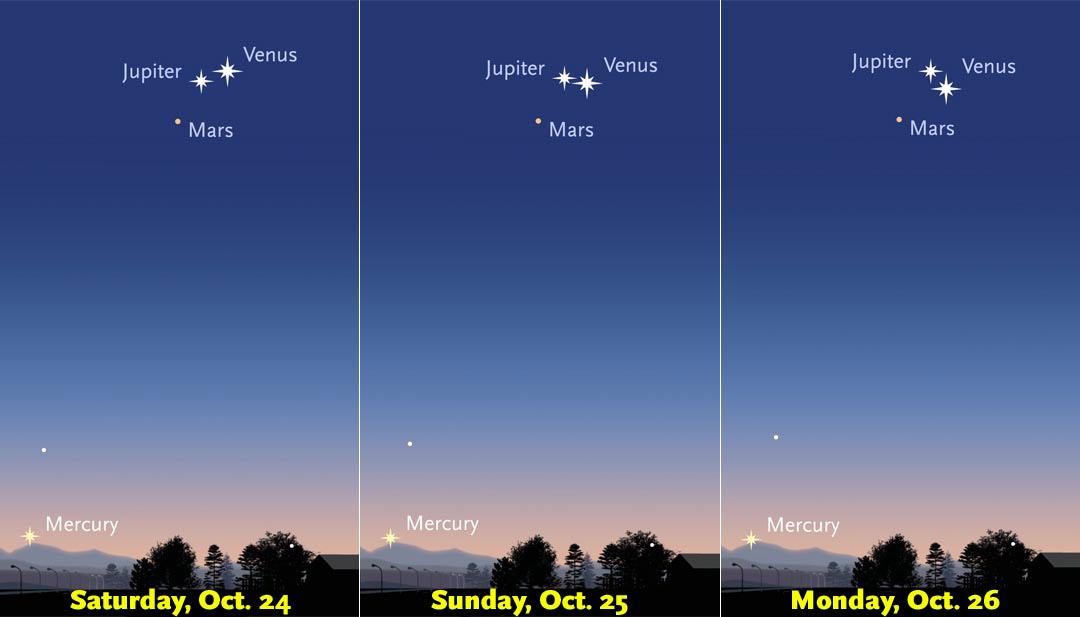 Jupiter and Venus will be close in the morning sky with Mars not far behind Monday, and the three planets will appear to move nearer to on another as the week goes on. The three bright worlds will form a very close triangle in the sky on Wednesday morning. They are going to come together and create a beautiful planetary spectacle.
Jupiter and Venus will be close in the morning sky with Mars not far behind Monday, and the three planets will appear to move nearer to on another as the week goes on. The three bright worlds will form a very close triangle in the sky on Wednesday morning. They are going to come together and create a beautiful planetary spectacle.
You won’t need any special equipment to spot the planetary conjunction made by Jupiter, Venus, Mars— the astronomy term for a close grouping of objects in the sky. The two planets are some of the brightest objects in our skies, and they look like gleaming stars, reports Mashable.
Any three planets that come together in this manner are termed as a ‘planetary trio’. They are all set to group together within a circle of diameter five degrees. This rare planetary phenomenon will unfurl from October 24 to 29.
The planets in our solar system orbit the sun in a single flat plane and so when we look into the sky, we see a narrow edgeway of that plane. The planets orbit the sun at different speeds, depending on how close they are to the sun. The further away they are, the slower they go. Venus only takes 225 days to orbit the sun once, whereas Mars takes two years and Jupiter takes 12.
The planets orbit the sun at different speeds, depending on how close they are to the sun. The further away they are, the slower they go. Venus only takes 225 days to orbit the sun once, whereas Mars takes two years and Jupiter takes 12.
Therefore, as we look into the sky from Earth, we can sometimes see two planets passing each other in their individual orbits. And a planetary trio is even more special. Venus, Jupiter and Mars, all pursuing their ordinary orbits around the sun, have happened to pass near as other as viewed from Earth.
Venus and Jupiter rank as the third-brightest and fourth-brightest celestial bodies in all the heavens, respectively, after the sun and moon. Therefore, star gazers should have little trouble viewing these two luminaries at morning dawn.
Those who want to see the event need to get up as early as 5 to 6 am. The two planets, Jupiter and Venus, are situated in the Leo constellation. Both planets are really bright, hence they require standing beneath the lion like structure of the constellation. However, the astronomer in you might have a little problem spotting Mars as it is comparatively less bright than the other two.
In order to spot Mars though, you might need to get up even earlier before sunrise. As bonus, some might even spot Mercury, a fourth planet over the horizon as the darkness subsides.
![]()































